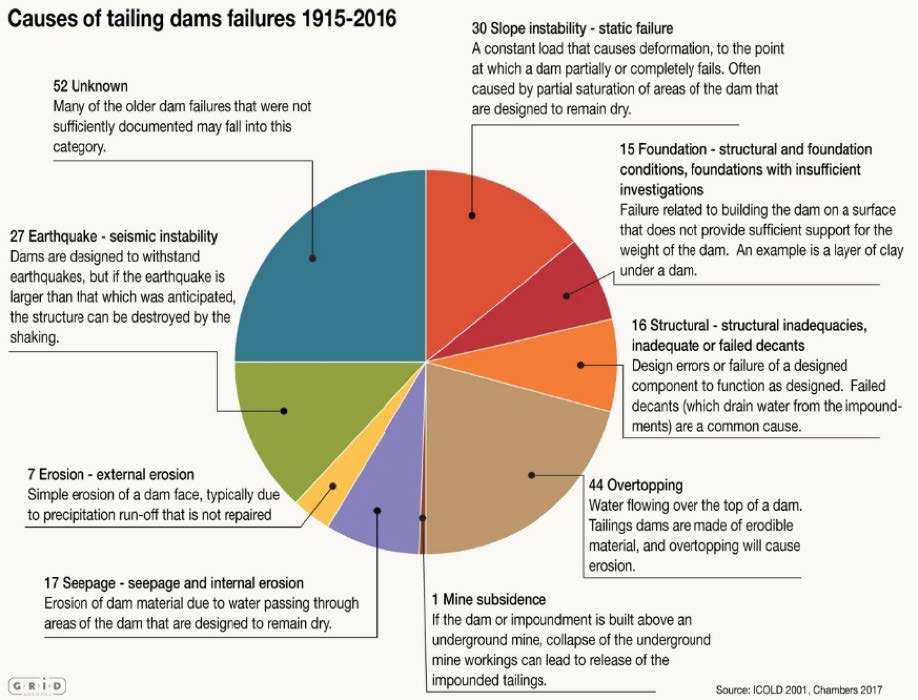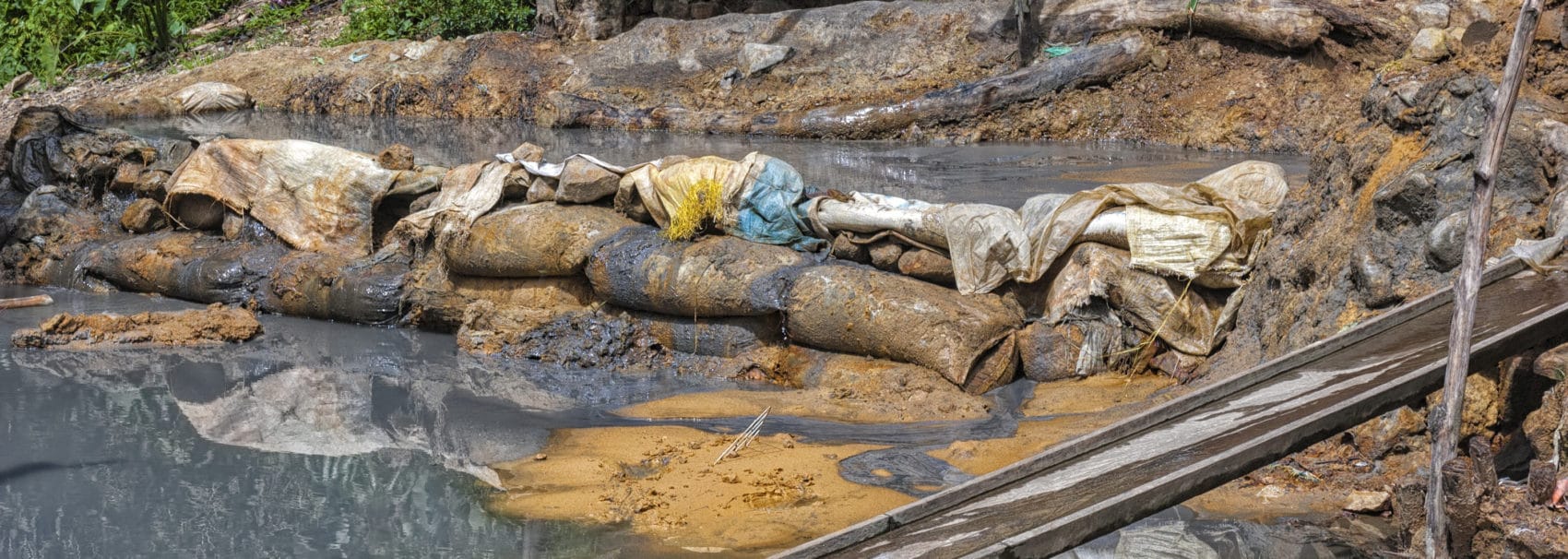The Situation
Tailings dams are the most common way mining companies deal with waste disposal when they’re extracting base and precious metals. The water used in grinding and processing the minerals is stored in a dam, where the leftover mineral particles form a slurry.
They present two major dilemmas.
1) Tailings dams are far from the prestigious projects of embankment dams created to profitably store water. Instead, they are often cost conservative spends to solve an unwanted problem at minimum expense. They are also built in stages as mines often close before expected. This can happen over many years, and staged construction may increase the risk of poorer supervision and additional flaws.
2) When they fail, the devastation and pollution caused by the slurry can be enormous, to a degree far outstripping water alone as it tears through buildings and deposits metals on its way.
The Impact
In November 2015, the largest socio-environmental disaster in Brazil’s history occurred when the Vale Mariana dam failed, spewing 50 million m3 (11bn gallons) of mine tailings through the Doce River basin and out to the estuary, contaminating it with trace metals.
It was the world’s largest tailings dam failure, and the 11th such serious failure in a decade, prompting calls for stronger legal measures to force the industry into action, and better technology to support it.
In January 2019, the Brumadinho tailings dam similarly failed, with Brazil’s National Water Authority estimating that the released tailings could pollute more than 300 kilometres of rivers.
However, this is very much a global issue with tailings dam failures in India, Mexico, Australia, Canada, Russia, the USA, China and beyond during the last decade. In 2010 the failure of the Kolontár tailings dam in Hungary released 700,000 m3 (15million gallons) of caustic red mud, killing ten people, injuring 120 and flooding 8 square kilometres. These are substantial events.
It doesn’t help that, because of their nature, tailings dams can feature among the largest man-made structures on earth. Nor that because more mines are operating longer, often with a reduction in ore grades, the degree of waste is growing, and the risk along with it.
That risk – especially to water supplies – was sufficient enough to lead the Central American country of El Salvador to ban mining altogether in 2017. It was a move prompted by a history of dealing with the environmental legacy and water contamination of previous mines.
If such attitudes spread in the face of this threat to water quality, the mining industry may find the reputational damage could be outweighed by the more pressing issue of withdrawals of rights to operate and the losses in revenue they entail. And increasingly the societal view is that this is one more environmental issue that should not be left to our children to remedy.

The Geology
Geology is important in two ways says Tim Schurr – Seequent’s Solution Architect. It supplies the materials that compose both the tailings and the dam material. Secondly, geology provides the framework upon which the tailings management facility is placed. Local geological conditions are very important for the short term especially says Tim, but also the long-term stability of these tailings’ facilities.
Since water management is the key factor for dam stability during operations, the hydrogeological conditions are critical.
If the underlying strata are very tight, low permeability, then more water must percolate through the dam, decreasing stability. Subsidence due to the weight of the dam and tailings can also compromise integrity. Seismicity is also important since earthquakes can cause liquefaction of both tailings and dam material.
Indirectly the local geological conditions can both help and challenge stability. Tailings that have lots of pyrite (and some other minerals) have the potential to generate acid mine drainage. Therefore, those tailings are often kept underwater, which makes water management in the tailings dam more difficult.
The more water there is in the facility, the more challenging it is to keep most of the dam’s material unsaturated, so it won’t liquify. On the other hand, other minerals cause tailings to solidify (self-cementing), and that means the long-term stability of the facility is enhanced. Most failures occur in active tailings dams, and the later may be one of the reasons.
60km/hr or 37mph is the speed that several millions of cubic metres of slurry can travel when a tailings dam fails.
What could be done
Since most failures are preceded by one or more warning signs, vigilant monitoring could aide in timely mitigation before failure. An exception would be a failure due to earthquakes or major storm events, where the design needs to have taken such potential events into account.
So, a good maintenance programme is an essential requirement for effective tailings impoundment management, a vital component of which is a comprehensive surveillance programme.
Both of those ought to be considered during the design phase.

Solution Architect, Seequent





